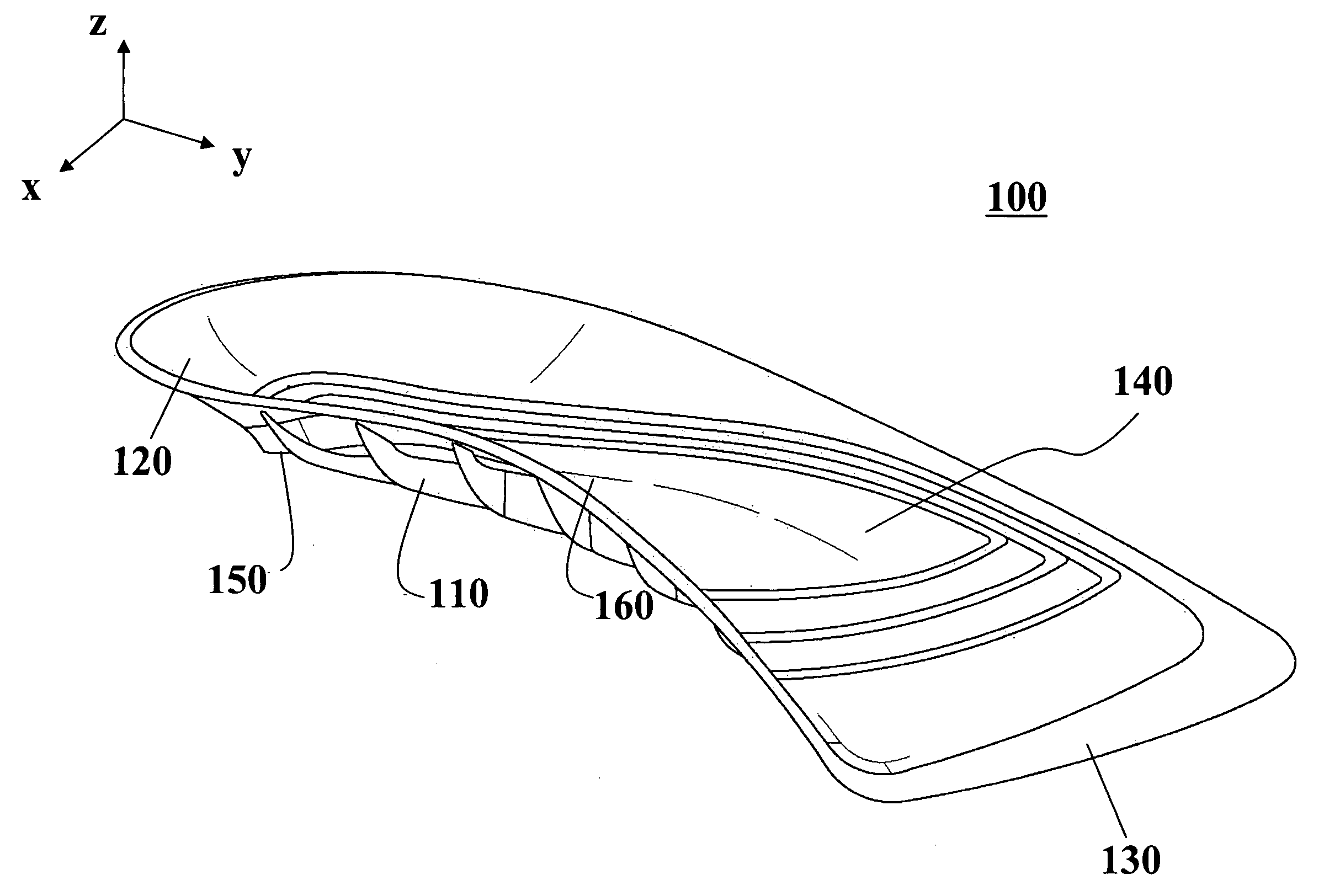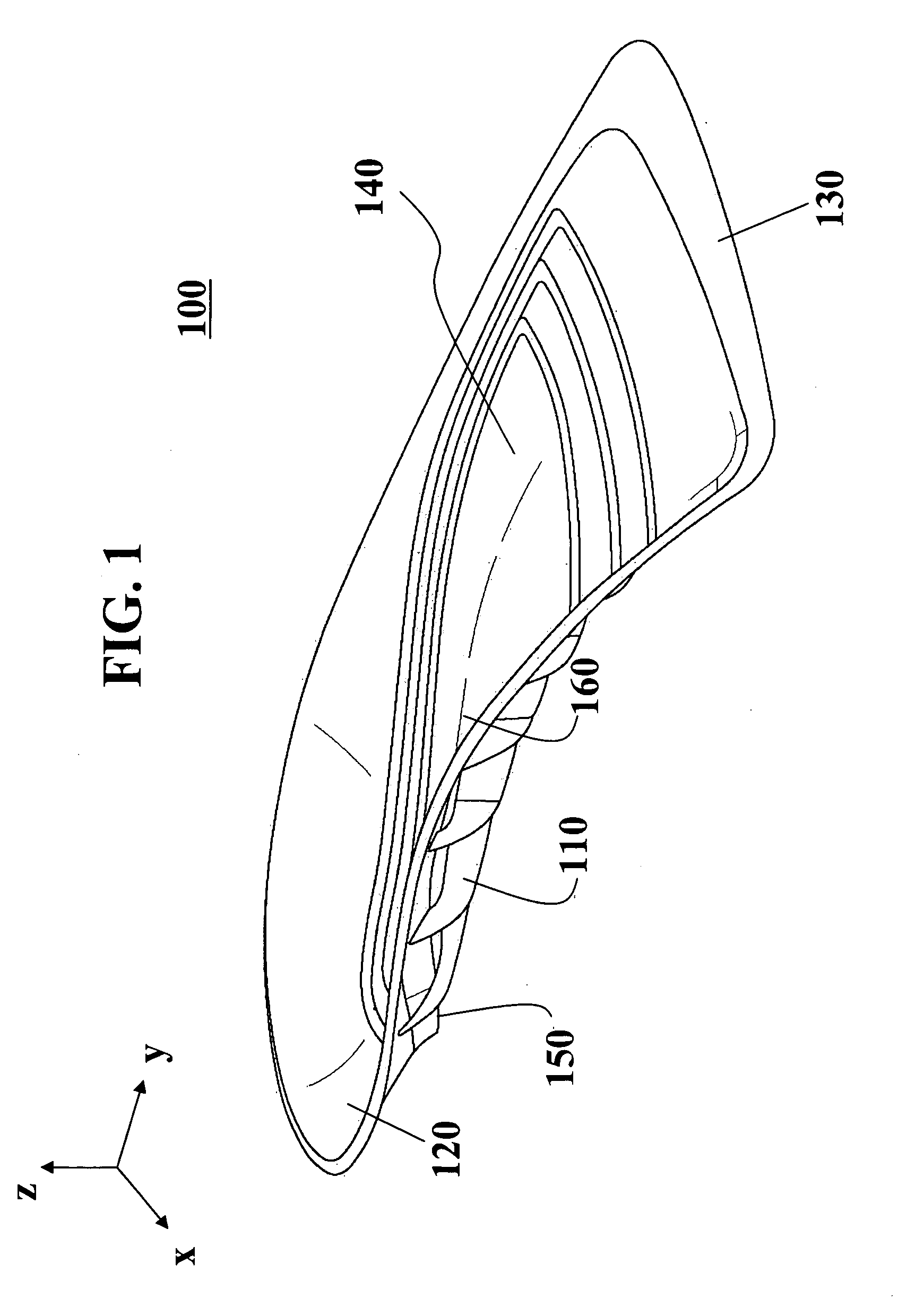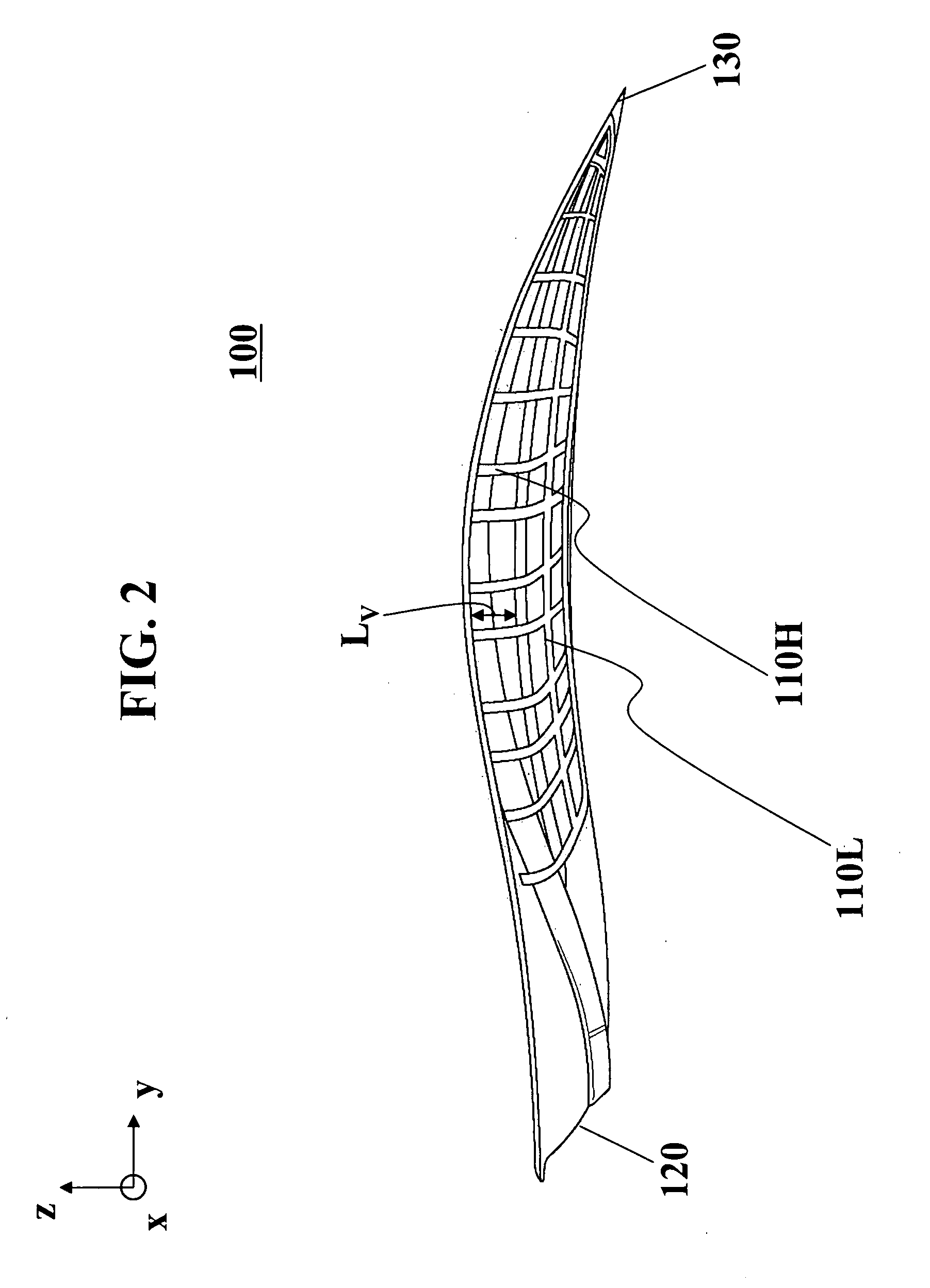Arch support with a patterned surface
- Summary
- Abstract
- Description
- Claims
- Application Information
AI Technical Summary
Benefits of technology
Problems solved by technology
Method used
Image
Examples
first embodiment
[0035]FIG. 1 is a perspective view of an exemplary arch support orthotic device including a plurality of square support structures according to the present invention. In FIG. 1, the arch support orthotic device 100 comprises a proximal end (heel region) 120, distal end (toe region) 130, an upper surface 140 facing a wearer's foot and a lower surface 150 facing an inner sole surface of a footwear.
[0036]The upper surface 140 of the arch support orthotic device 100 is formed of a deformable semi-rigid material, such as polyethylene, polypropylene, nylon, subortholon or the like, adequate to provide arch support for the expected wearer. The upper surface 140 is contoured to conform generally to the arch of a foot in the manner well-known in the art.
[0037]The lower surface 150 of the arch support orthotic device 100 includes interconnected arch support structures 110. In this exemplary embodiment, the arch support structures 110 are formed of a plurality of substantially square structure...
second embodiment
[0051]FIGS. 6 and 7 are front and side views, respectively, of the arch support orthotic device including the plurality of honeycomb support structures according to the present invention. In this exemplary embodiment, the arch support orthotic device 200 can be constructed of polypropylene, or other relatively hard or rigid plastic material. As shown in FIGS. 6 and 7, the arch support orthotic device 200 tapers in thickness along its length and width of the arch support orthotic device 200 to accommodate the wearer's comfort. The honeycomb arch support structures 210 will prevent collapsing of the arch support region 260 directly against the shoe inner sole surface (not shown) and thus maintain the desired supporting function. In this exemplary embodiment, the length (in the vertical direction) of the supporting structures LV increases gradually from the distal end 230 to the proximal end 220. The size (width of the inner portion) of each honeycomb is typically 0.5 to 0.75 inches. T...
fourth embodiment
[0053]FIGS. 8A and 8B are bottom views of arch support orthotic devices including the plurality of honeycomb support structures according to third and fourth embodiment of the present invention. As shown in FIGS. 8A and 8B, the arch support orthotic device 300 or 400 can include a non-slip pad 370 and 470 that can prevent slipping of the arch support orthotic device 300 or 400 against an inner sole surface of a footwear. Accordingly, even when the size the arch support orthotic device 300 or 400 is less than 100% of the shoes, the arch support orthotic device 300 or 400 would not slip within the shoes.
[0054]In general, the closer together the support structures, the more supportive the device and the more rigid the arch support region 360 and 460. In addition, the greater the width of the arch support structures, the more supportive the device and the more rigid the arch support region 360 and 460. Therefore, based on particular preferences of the manufacturer and on the market dema...
PUM
 Login to View More
Login to View More Abstract
Description
Claims
Application Information
 Login to View More
Login to View More - R&D
- Intellectual Property
- Life Sciences
- Materials
- Tech Scout
- Unparalleled Data Quality
- Higher Quality Content
- 60% Fewer Hallucinations
Browse by: Latest US Patents, China's latest patents, Technical Efficacy Thesaurus, Application Domain, Technology Topic, Popular Technical Reports.
© 2025 PatSnap. All rights reserved.Legal|Privacy policy|Modern Slavery Act Transparency Statement|Sitemap|About US| Contact US: help@patsnap.com



